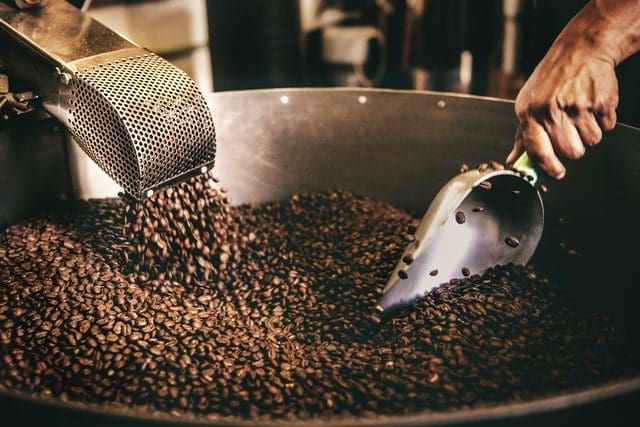Nicaraguan coffee beans offer rich, complex flavors that coffee lovers treasure. However, these delicate beans can lose their taste and smell quickly without proper care. Store aromatic Nicaraguan beans in an airtight container away from light, heat, and moisture to keep them fresh for weeks longer.
The natural oils and compounds that give single-origin Nicaragua coffee its unique taste break down when exposed to air, sunlight, and humidity. This process happens faster than most people think. Within days, fresh beans can start to lose their bright flavors and turn stale.
The good news is that simple storage methods can protect these valuable beans. By understanding what damages coffee and using the right techniques, coffee drinkers can enjoy full flavor from their Nicaraguan beans for much longer. Small changes in how beans are stored make a big difference in every cup.
Best Practices for Storing Aromatic Nicaraguan Beans
Proper storage of Nicaraguan coffee beans requires the right container, controlled environmental conditions, and limited air exposure to maintain their complex flavor profile. These practices help preserve the beans’ natural oils and aromatic compounds that make them special.
Optimal Storage Containers for Preserving Freshness
The best containers for Nicaraguan beans are airtight and made from non-reactive materials. Glass jars with tight-fitting lids work well for small amounts. Ceramic containers with rubber seals also protect the beans effectively.
Recommended Container Materials:
- Glass – Clear visibility, but must be kept in dark places
- Ceramic – Blocks light naturally and maintains a stable temperature
- Opaque plastic – Lightweight and portable option
Metal containers should be avoided as they can affect the beans’ taste. The container size matters too. Choose one that fits your bean quantity with minimal empty space.
Vacuum-sealed bags provide excellent protection for longer storage periods. They remove air completely and prevent oxidation. Transfer beans to smaller containers as you use them to reduce repeated air exposure.
Ideal Environmental Conditions: Temperature, Light, and Humidity
Nicaraguan beans stay fresh longest in cool, dark, and dry conditions. The ideal temperature range is 60-70°F. Higher temperatures speed up the breakdown of oils and aromatic compounds.
Light breaks down the beans’ natural oils quickly. Store containers in pantries, cabinets, or other dark spaces. Direct sunlight damages beans within hours.
Humidity should stay below 60% to prevent mold growth. High moisture levels also cause beans to lose their flavor faster. Basements and areas near stoves are poor storage locations.
Storage Environment Guidelines:
- Temperature: 60-70°F
- Humidity: Below 60%
- Light: Complete darkness
- Location: Stable, dry area
Room temperature storage works well for beans used within 2-3 weeks. Freezing beans is possible for longer storage, but requires proper preparation and thawing methods.
Impact of Air Exposure and How to Minimize It
Air exposure causes Nicaraguan beans to lose their aromatic oils through oxidation. This process starts immediately after roasting and speeds up with more air contact.
Whole beans last 2-4 weeks when stored properly. Ground beans lose freshness much faster and should be used within one week. Buy whole beans and grind them just before brewing.
Open containers only when needed. Each time air enters, it starts breaking down the beans’ quality. Use smaller containers to reduce the amount of air space around the beans.
Air Exposure Prevention:
- Keep containers sealed tightly
- Use vacuum-sealed storage bags
- Grind beans just before use
- Store in smaller portions
Carbon dioxide naturally escapes from freshly roasted beans. One-way valve bags allow this gas to exit while keeping air out. This makes them perfect for storing recently roasted Nicaraguan beans.
Long-Term Preservation and Storage Mistakes to Avoid
Proper storage methods can keep Nicaraguan beans fresh for months, but common mistakes often lead to flavor loss and shortened shelf life. Temperature control and recognizing quality decline are key factors for maintaining bean quality.
Freezing vs. Refrigeration: What Works Best
Freezing works better than refrigeration for long-term storage of Nicaraguan coffee beans. The freezer maintains a stable temperature around 0°F, which slows down the oxidation process that causes flavor loss.
Refrigeration creates problems for coffee beans. The temperature changes when people open and close the fridge door. This causes condensation to form on the beans when they warm up and cool down.
Freezing Guidelines:
- Store beans in airtight containers or vacuum-sealed bags
- Divide beans into weekly portions before freezing
- Let frozen beans reach room temperature before opening the container
- Use frozen beans within 6 months for the best flavor
Why Refrigeration Fails:
- Temperature fluctuations damage bean structure
- Moisture buildup leads to mold growth
- Odors from other foods can be absorbed into beans
- Humidity levels are too high for coffee storage
Common Storage Errors That Reduce Flavor and Aroma
Light exposure damages Nicaraguan beans quickly. UV rays break down the oils that create flavor and aroma. Many people store beans in clear containers on countertops, which speeds up this process.
Air contact is another major problem. Oxygen causes the beans to go stale within days. Leaving bags open or using containers that don’t seal properly lets air in constantly.
Temperature Mistakes:
- Storing beans near stoves or heating vents
- Keeping beans in hot cars or garages
- Placing containers in direct sunlight
- Using warm storage areas above 70°F
Container Problems:
- Using permeable materials like paper bags long-term
- Choosing containers that are too large for the amount of beans
- Not cleaning containers between refills
- Using containers that previously held strong-smelling items
Grinding beans too early also reduces quality. Ground coffee loses flavor 10 times faster than whole beans. People often grind large batches to save time, but this wastes the beans’ potential.
Signs of Stale or Degraded Nicaraguan Coffee Beans
Visual changes appear first when beans start to degrade. Fresh Nicaraguan beans have a rich, dark color with a slight oil sheen. Stale beans look dull and dry.
The smell test reveals quality problems quickly. Fresh beans have a strong, pleasant aroma when you open the container. Stale beans smell weak or have no smell at all.
Physical Signs of Deterioration:
- Beans feel brittle and break easily
- Surface appears chalky or dusty
- Color fades to light brown or gray
- Oil residue disappears completely
Aroma and Taste Changes:
- Weak or absent coffee smell
- Sour or rancid odors
- Bitter taste without complexity
- Flat flavor profile lacking depth
Timeline for Quality Loss:
- Whole beans: 2-3 weeks at room temperature
- Ground coffee: 3-5 days at room temperature
- Opened bags: 1-2 weeks, regardless of storage method
- Improperly stored beans: 3-7 days before noticeable decline
Mold growth indicates serious storage problems. Small white or green spots on beans mean moisture got into the container. Beans with mold should be thrown away immediately since they can cause health problems.
Conclusion
Proper storage protects the unique flavor notes that make Nicaraguan coffee beans special. Coffee lovers should store their beans in airtight containers away from light, heat, and moisture.
Key storage factors include:
- Temperature: Room temperature works best
- Container: Airtight and opaque materials
- Location: Cool, dark pantry space
- Timeline: Use within 2-4 weeks of roasting
Following these simple steps keeps Nicaraguan beans fresh and flavorful for weeks. The right storage method preserves the rich taste that makes each cup worth drinking.


